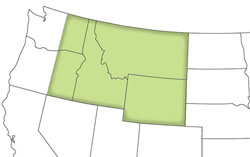Constitutionalists have turned infighting into an art form. It has gotten so bad to the point that those within the Patriot community have been slandered, libeled, and defamed by those very folks who claim to pursue the same ends that the other patriot does. The real problem with internal balkanization is that by mentioning any particular instances of it, you inadvertently perpetuate it. This is because an individual (even one who is not party to a dispute and refuses to take sides) will be accused by followers of one of the disputed parties to be “secretly” siding with one against the other. The only real way around this is to have an objective third party arbitrator whose procedures and rulings are agreed to by the contending parties in the attempt to finally put the dispute to rest.
During the American Revolutionary War for Independence, Committees of Safety (CoS) were instrumentally pivotal in conducting the war effort. Following the Battles of Lexington and Concord, one of their chief functions was to try criminal cases (although not civil ones) given that the British imperial court system had broken down. These CoS were also constantly engaged in the task of determining individual loyalties towards the cause for independence; those who chose to remain as Tories were usually ostracized until they chose to join the local association.
Classical liberal philosophers have maintained that the Law was not intended as a tool of tyrannical oppression, but as a form of collective self-defense. “Its mission,” as Bastiat says, “is to prevent the rights of one from interfering with the those of another.” While it may have been based in part on lex talionis, the principle of justice was always based on the absence of plunder.
The Committee of Safety – Common Law Court (CoS-CLC) is just that neutral third party arbitrator that is badly needed to bring balance to the Patriot community. By ingeniously using the Internet as a tool in order to enhance capabilities (such as ease of communication) and overcome difficulties (such as the lack of geographical proximity), the CoS-CLC provides the fairest means of dealing with disruptions between dissidents within such a context. It would not too far off the mark to describe the CoS-CLC as the epitome of what the Dispute Resolution Organization (DRO) libertarian concept should have been, given that it is an organization whose very purpose is to resolve disputes.
The enforcement mechanism for the verdicts and unanswered indictments alike is ostracism. As Stefan Molyneux has admitted, “In the past, undesired social behavior was punished through ostracism…the tool of economic and social ostracism is the most powerful method for dealing with those who repeatedly violate [desirable?] moral and social [practices?]…..all we need to do is publish their crimes for all to see, and let the natural justice of society take care of the rest.” Gary Hunt also states, “It is time for us to change the game around and get them to fear us…through exposure and removal of those who would seek to undermine our ability to function productively.” If it worked for the Greeks, the colonial Americans, and every other civilization, then it will work for us too.
Volunteers are always needed for the CoS-CLC. Every role from judges, to jurors, to grand jurors need people with which to fill them. This necessarily requires teamwork, so every political dissident who sincerely believes in self-government should take it seriously by practicing what they preach through volunteering for the CoS-CLC in order to work productively with others to provide remedy for those who have been harmed.
You can learn more about the Committee of Safety – Common Law Court, and volunteer to serve, over @ www.committee.org/Court. If you are interested in how the CLC works procedurally, then feel free to watch the CoS-CLC recruiting video; should you desire more precise details, that this available at the Court’s website.





















